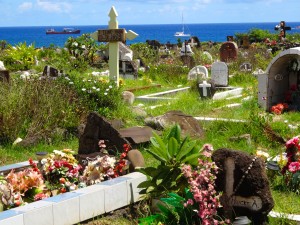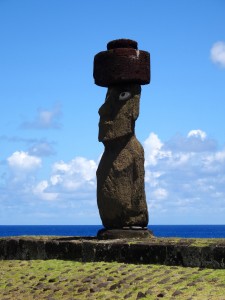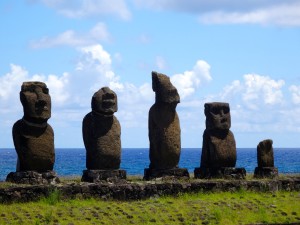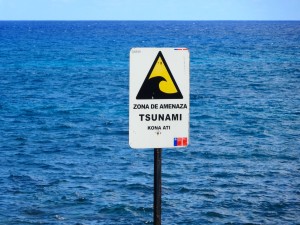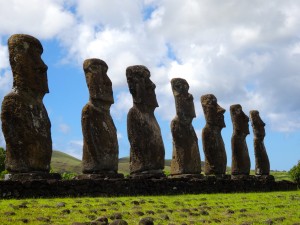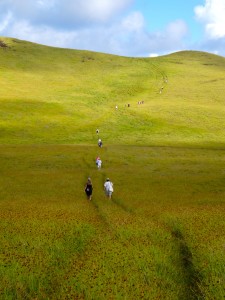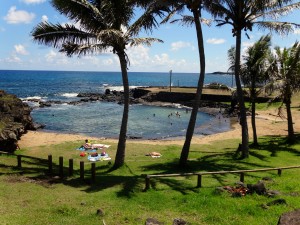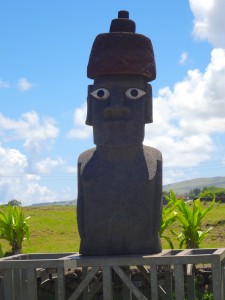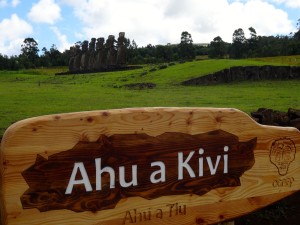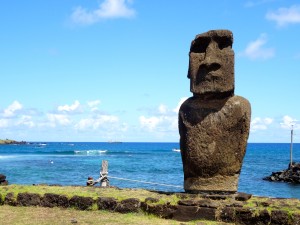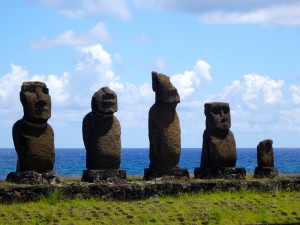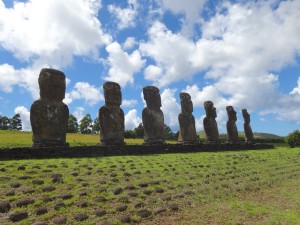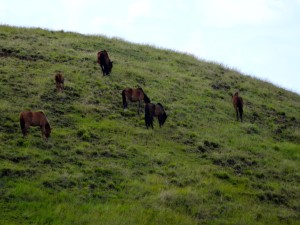(pronounced mo i) giant rock sculptures made of volcanic rock, survived. These mo’ai statues are between 1,250 and 1,500 years old. Some weigh as much as 85 tons and stand 30 feet tall. There are 887 such statues on the island.
Today much of the island is a protected UNESCO World Heritage site. The Polynesian people settled here in the first millennium. They estimate that at one time the tiny island sustained nearly 15,000 people. However, overpopulation and the introduction of the Polynesian Rat resulted in the gradual and complete deforestation of the entire island. This event then led to the decline of the Rapa Nui civilization.
In 1722 when european explorers came to the island there were only 2,000 inhabitants. The population suffered further decline until 1877 where only 111 people remained. The name Easter Island was given to is because it was discovered by the Dutch on Easter in 1722. Wild horses roam freely all over the island (see pictures).
